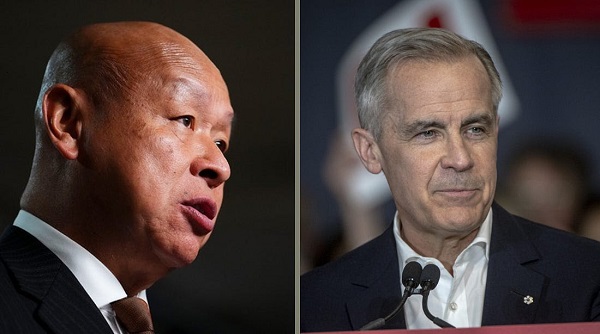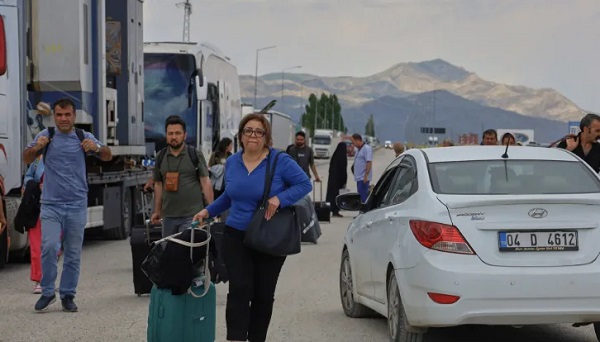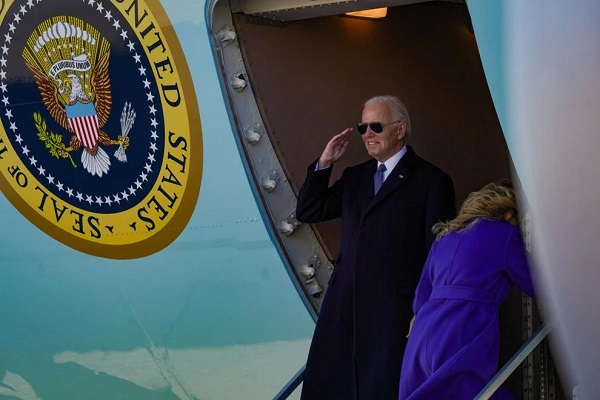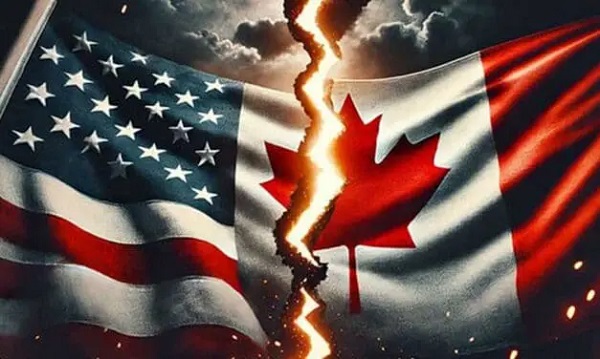Uncategorized
Race to get aid to Indonesian quake victims as deaths rise

PALU, Indonesia — Nearly a week after disaster struck, aid workers raced Thursday to get shelter, food, medicine and other badly needed supplies to the Indonesian port city of Palu, ravaged by a powerful earthquake and tsunami that killed more than 1,400 people.
The Indonesian military was bringing in hundreds more troops to help with search and rescue efforts and keep order among survivors who have grown desperate six days after their lives were thrown into chaos. Hundreds of the injured and other survivors lined up on the tarmac of Palu’s badly damaged airport, hoping to escape aboard military aircraft.
As help and supplies began arriving, there were other signs of progress: Trucks were hauling in new electricity poles to replace broken ones and restringing the wires. Workers said they intended to repair all the damage to the networks and substations and get them reconnected to the grid within days.
The United Nations announced a $15 million allocation to support relief efforts, saying more than 200,000 people were in dire need of assistance.
More than 70,000 homes are thought to have been wrecked by the quake, demolished by the tsunami or engulfed by mud slides. Thousands of people are sleeping in tents or in rough shelters made from debris, unsure when they’ll be able to rebuild. Many spend their days trying to secure basics like clean water and fuel for generators.
“Please tell the government and the NGOs if they’re really willing to help us with some food please do not give it away through the command posts,” said Andi Rusding, who was huddled with his relatives under a tarpaulin. “It’s better to go directly to each and every tent. Because sometime (the relief goods) aren’t distributed evenly.”
“It’s really difficult to find water and we don’t have a place to shower, but thank God we got some aid from the government, including a medical checkup,” said Masrita Arifin, who was camped out a few hundred meters (yards) from her family’s heavily damaged home.
National disaster agency spokesman Supoto Purwo Nugroho said most of the 1,424 confirmed dead had been buried. He told reporters in Jakarta that search efforts were being stepped up, including at a collapsed hotel in Palu where a South Korean is believed trapped.
The death toll is expected to rise as rescue crews dig and comb through debris after being slowed initially by impassable roads and other damage.
People and heavy machinery were struggling to unearth victims from expanses of earth that surged sideways due to liquefaction, a phenomenon in which an earthquake turns loose, wet soil into quicksand-like mud. Several communities were wiped out as homes suddenly sank into the mire, which has since hardened in the tropical sun.
Many victims might have survived with faster help, said Palu resident Bambang. He told local television he found a friend injured and trapped under debris but was unable to help him. The friend died, leaving a message to have him buried in front of his church, he said.
“He was still alive then, but he died because the evacuation was so slow,” said Bambang, who like many Indonesians uses one name.
Indonesian Foreign Minister Retno Marsudi said military transport aircraft from India and Singapore had arrived to help in the relief efforts. Marsudi said 18 countries had offered help and the government was still working out arrangements with some countries, including Japan and the United States.
The aircraft will be used to transport supplies and evacuate victims, he said.
National police spokesman Brig. Gen. Dedi Prasetyo said security was being ramped up to ensure law and order after 92 people were arrested for looting goods such as motor oil, tires and farming equipment. Authorities earlier allowed desperate villagers to grab food supplies from shops but warned them not to take other things.
Palu has repeatedly been hit by the quakes and tsunamis that plague much of the Indonesian archipelago. The national disaster agency says more than 148 million Indonesians are at risk in earthquake-prone areas and 3.8 million people also face danger from tsunamis, with at most a 40 minute window for warning people to flee.
Among those gathered at the airport in Palu was Fitriani, one of a group of students hoping to leave for an Islamic competition in far-off Medan, on the island of Sumatra. The group of students have been practicing calligraphy and citing the
“We survived here,” Fitriani said. “We pray we can be safe in Palu.”
___
Associated Press writer Eileen Ng in Jakarta, Indonesia, contributed to this report.
Tassanee Vejpongsa And Stephen Wright, The Associated Press
Uncategorized
Kananaskis G7 meeting the right setting for U.S. and Canada to reassert energy ties


Energy security, resilience and affordability have long been protected by a continentally integrated energy sector.
The G7 summit in Kananaskis, Alberta, offers a key platform to reassert how North American energy cooperation has made the U.S. and Canada stronger, according to a joint statement from The Heritage Foundation, the foremost American conservative think tank, and MEI, a pan-Canadian research and educational policy organization.
“Energy cooperation between Canada, Mexico and the United States is vital for the Western World’s energy security,” says Diana Furchtgott-Roth, director of the Center for Energy, Climate and Environment and the Herbert and Joyce Morgan Fellow at the Heritage Foundation, and one of America’s most prominent energy experts. “Both President Trump and Prime Minister Carney share energy as a key priority for their respective administrations.
She added, “The G7 should embrace energy abundance by cooperating and committing to a rapid expansion of energy infrastructure. Members should commit to streamlined permitting, including a one-stop shop permitting and environmental review process, to unleash the capital investment necessary to make energy abundance a reality.”
North America’s energy industry is continentally integrated, benefitting from a blend of U.S. light crude oil and Mexican and Canadian heavy crude oil that keeps the continent’s refineries running smoothly.
Each day, Canada exports 2.8 million barrels of oil to the United States.
These get refined into gasoline, diesel and other higher value-added products that furnish the U.S. market with reliable and affordable energy, as well as exported to other countries, including some 780,000 barrels per day of finished products that get exported to Canada and 1.08 million barrels per day to Mexico.
A similar situation occurs with natural gas, where Canada ships 8.7 billion cubic feet of natural gas per day to the United States through a continental network of pipelines.
This gets consumed by U.S. households, as well as transformed into liquefied natural gas products, of which the United States exports 11.5 billion cubic feet per day, mostly from ports in Louisiana, Texas and Maryland.
“The abundance and complementarity of Canada and the United States’ energy resources have made both nations more prosperous and more secure in their supply,” says Daniel Dufort, president and CEO of the MEI. “Both countries stand to reduce dependence on Chinese and Russian energy by expanding their pipeline networks – the United States to the East and Canada to the West – to supply their European and Asian allies in an increasingly turbulent world.”
Under this scenario, Europe would buy more high-value light oil from the U.S., whose domestic needs would be back-stopped by lower-priced heavy oil imports from Canada, whereas Asia would consume more LNG from Canada, diminishing China and Russia’s economic and strategic leverage over it.
* * *
The MEI is an independent public policy think tank with offices in Montreal, Ottawa, and Calgary. Through its publications, media appearances, and advisory services to policymakers, the MEI stimulates public policy debate and reforms based on sound economics and entrepreneurship.
As the nation’s largest, most broadly supported conservative research and educational institution, The Heritage Foundation has been leading the American conservative movement since our founding in 1973. The Heritage Foundation reaches more than 10 million members, advocates, and concerned Americans every day with information on critical issues facing America.
Uncategorized
Poilievre on 2025 Election Interference – Carney sill hasn’t fired Liberal MP in Chinese election interference scandal

From Conservative Party Communications
“Yes. He must be disqualified. I find it incredible that Mark Carney would allow someone to run for his party that called for a Canadian citizen to be handed over to a foreign government on a bounty, a foreign government that would almost certainly execute that Canadian citizen.
“Think about that for a second. We have a Liberal MP saying that a Canadian citizen should be handed over to a foreign dictatorship to get a bounty so that that citizen could be murdered. And Mark Carney says he should stay on as a candidate. What does that say about whether Mark Carney would protect Canadians?
“Mark Carney is deeply conflicted. Just in November, he went to Beijing and secured a quarter-billion-dollar loan for his company from a state-owned Chinese bank. He’s deeply compromised, and he will never stand up for Canada against any foreign regime. It is another reason why Mr. Carney must show us all his assets, all the money he owes, all the money that his companies owe to foreign hostile regimes. And this story might not be entirely the story of the bounty, and a Liberal MP calling for a Canadian to be handed over for execution to a foreign government might not be something that the everyday Canadian can relate to because it’s so outrageous. But I ask you this, if Mark Carney would allow his Liberal MP to make a comment like this, when would he ever protect Canada or Canadians against foreign hostility?
“He has never put Canada first, and that’s why we cannot have a fourth Liberal term. After the Lost Liberal Decade, our country is a playground for foreign interference. Our economy is weaker than ever before. Our people more divided. We need a change to put Canada first with a new government that will stand up for the security and economy of our citizens and take back control of our destiny. Let’s bring it home.”
-

 conflict2 days ago
conflict2 days agoTrump Threatens Strike on Khamenei as Israel Pounds Iranian Military Command
-

 Business18 hours ago
Business18 hours agoCanada’s critical minerals are key to negotiating with Trump
-

 Alberta1 day ago
Alberta1 day agoCentral Alberta MP resigns to give Conservative leader Pierre Poilievre a chance to regain a seat in Parliament
-

 International11 hours ago
International11 hours agoJudiciary explores accountability options over Biden decline ‘coverup’
-

 Alberta1 day ago
Alberta1 day agoCalls for a new pipeline to the coast are only getting louder
-

 Business11 hours ago
Business11 hours agoRFK Jr. planning new restrictions on drug advertising: report
-

 Education1 day ago
Education1 day agoStudents can’t use AI to cheat on standardized tests
-

 Business1 day ago
Business1 day agoCanada’s economic pain could be a blessing in disguise






